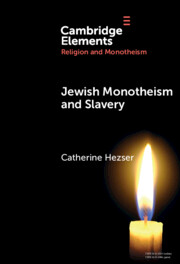Element contents
Jewish Monotheism and Slavery
Published online by Cambridge University Press: 19 February 2024
Summary
- Type
- Element
- Information
- Online ISBN: 9781009260497Publisher: Cambridge University PressPrint publication: 14 March 2024
References
- 6
- Cited by



